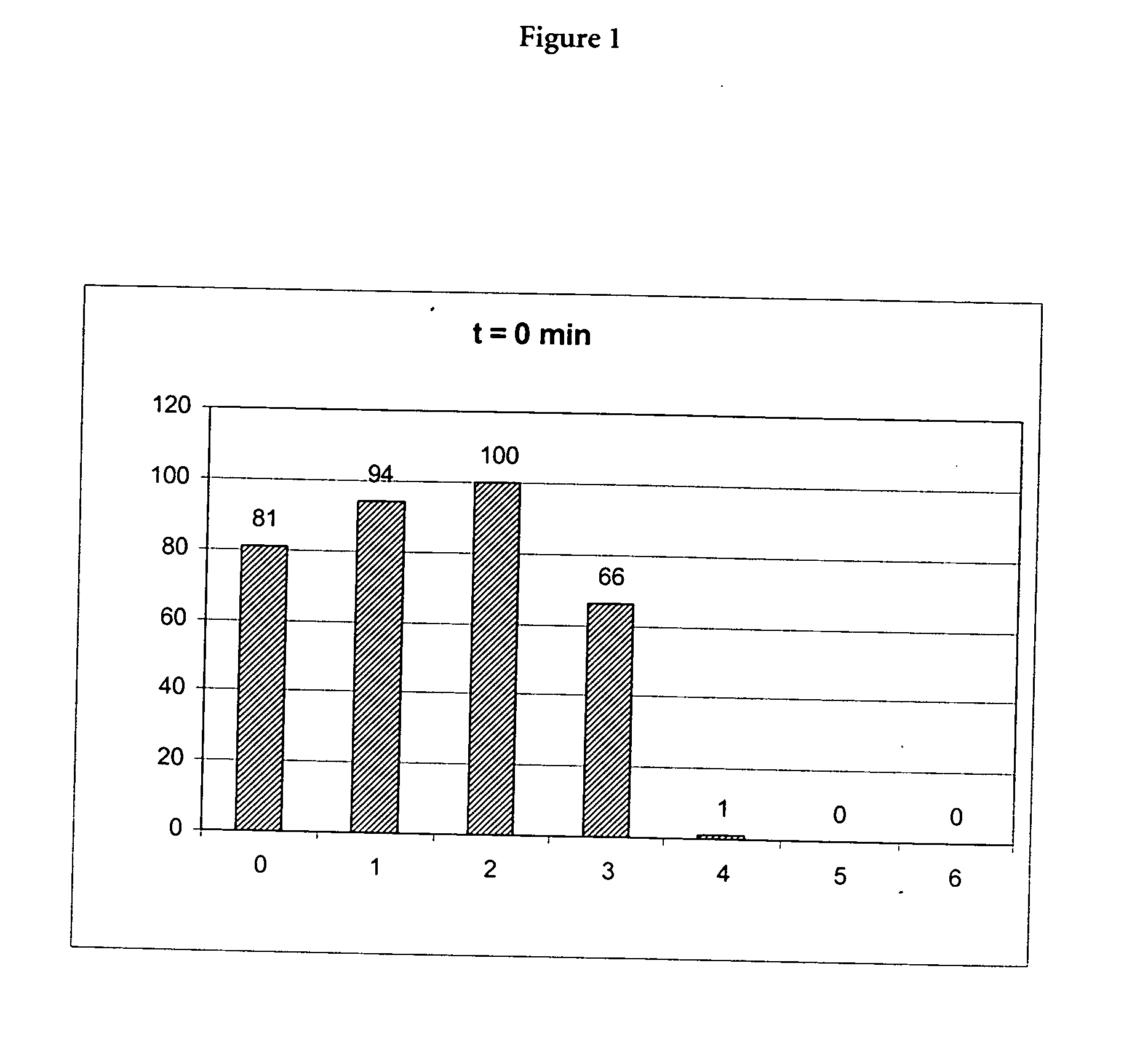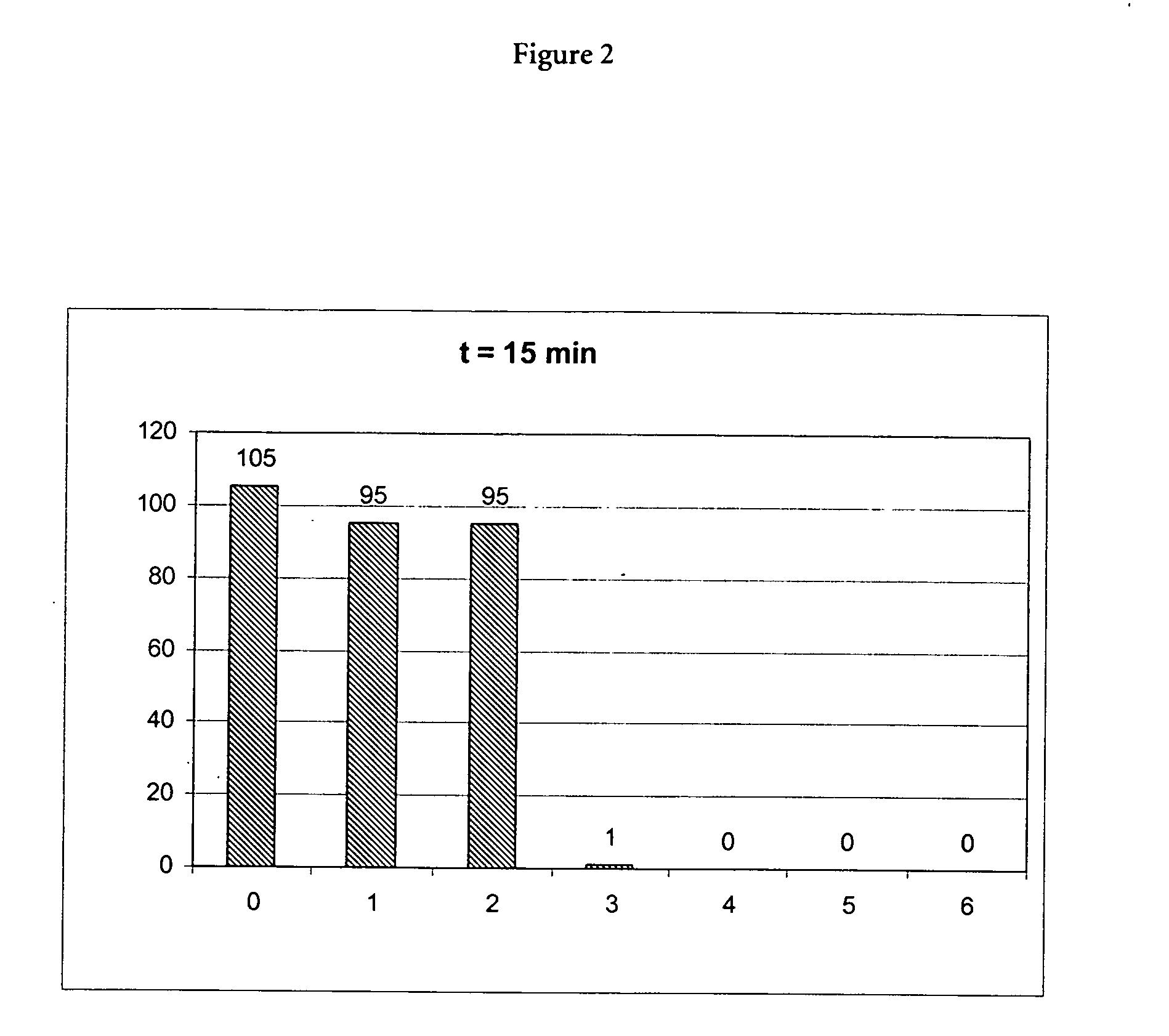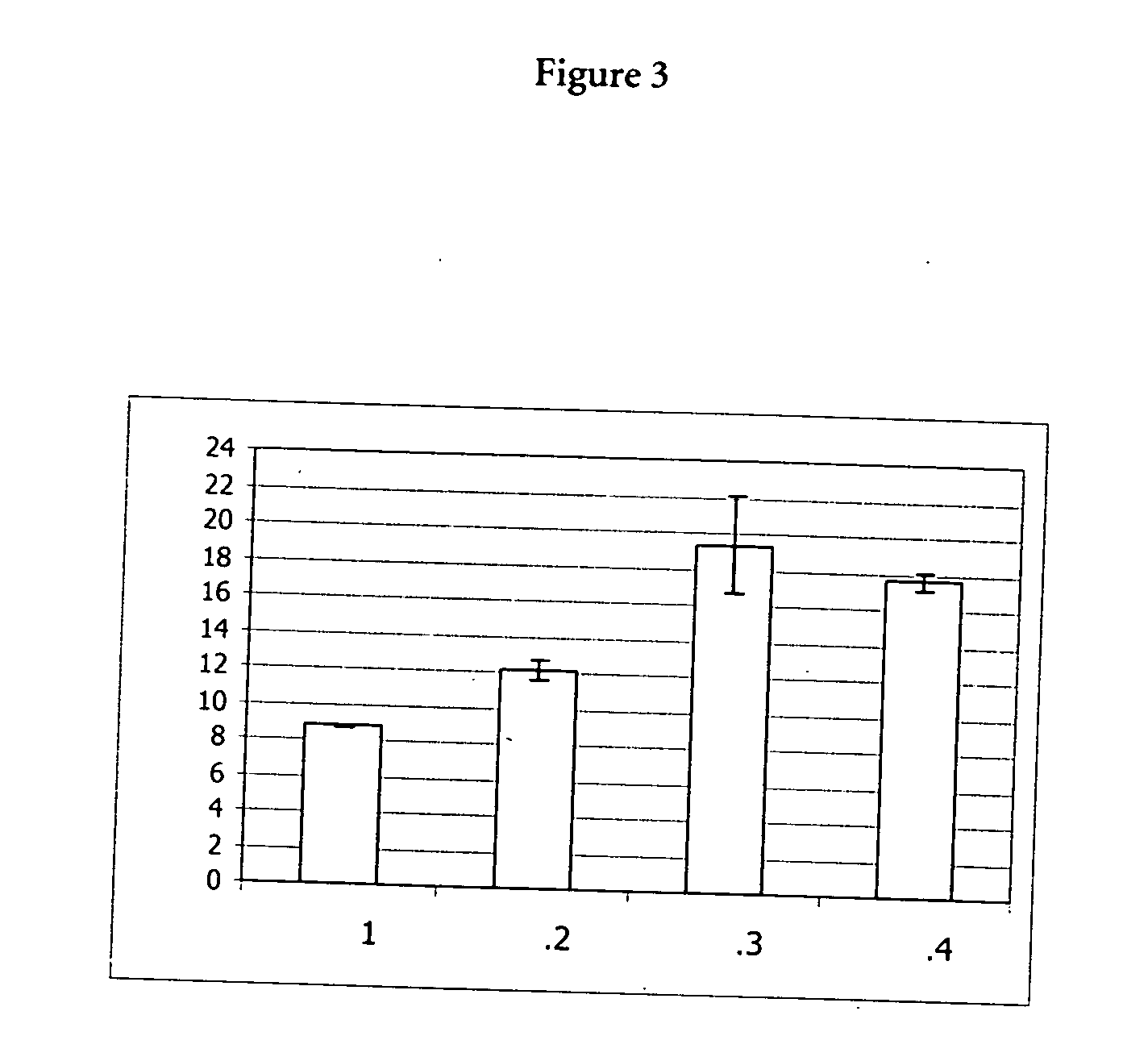Adsorption of nucleic acids to a solid phase
a nucleic acid and solid phase technology, applied in the field of nucleic acid adsorption to a solid phase, can solve the problems of interacting with the target component during lysis, difficult to isolate or measure, and many biological substances, especially nucleic acids, presenting special challenges in isolating them from their natural environmen
- Summary
- Abstract
- Description
- Claims
- Application Information
AI Technical Summary
Benefits of technology
Problems solved by technology
Method used
Image
Examples
example 1
(A) Incubation of Proteinase K in the Presence of a Chaotropic Agent
[0071] 10 μl of a 20 mg / ml stock solution of proteinase K (Roche Diagnostics GmbH, Mannheimm, catalogue no. 745723; 90 mg dissolved in 4.5 ml water) was mixed with a chaotropic buffer containing 50 mM Tris-HCl pH 6.0, 1% DTT, 20% TRITON X-100 and x M Guanidinum thiocyanate; x=0, 1, 2, 3, 4, 5, 6). Directly after mixing the proteinase K activity was measured in a first aliquot (10 μl) of the mixture using the assay described below (0 min activity value). 15 min after mixing the proteinase K activity was measured in a second aliquot (10 μl) of the mixture using the assay described below (15 min activity value).
(B) Assay to Determine Proteinase K Activity
[0072] 10 μl of the proteinase K in chaotropic buffer (see above, (A)) were mixed with assay buffer, that is to say 980 μl 0.2 M Triethanolamin, 0.05% (weight by volume) PEG 6000, 0.1 M Calcium chloride, and 10 μl of a 200 mM substate solution. The substrate was S...
example 2
(A) Reagents
[0075] a) proteinase K stock solution: recombinant proteinase K, PCR grade, 50 U / ml [0076] b) Lysis Buffer: 4 M guanidinium thiocyanate, 50 mM Tris-HCl, 20% TRITON X-100, pH 6.0 [0077] c) Binding Buffer: 4 M guanidinium thiocyanate, 50 mM Tris-HCl, 20% TRITON X-100, pH 6.0 [0078] d) Inhibitor Removal Buffer: 5 M guanidinium hydrochloride, 20 mM Tris-HCl, 38% ethanol, pH 6.6 [0079] e) Wash Buffer: 20 mM NaCl, 2 mM Tris-HCl, 80% ethanol, pH 7.5 [0080] f) Elution Buffer: 50 mM Tris-HCl, pH 8.2 [0081] g) Ethanol (100%) [0082] Additionally necessary: Commercially available spin columns containing a silica membrane, e.g. NucleoSpin Blood L, distributed by Machery & Nagel.
(B) Experiment 1: One-Step Procedure without Proteinase K Treatment [0083] 1. pipette 1,000 μl EDTA blood into a 15 ml Falcon tube [0084] 2. add 1,000 μl Lysis Buffer, vortex gently [0085] 3. incubate for 15 min at room temperature on a roller mixer, agitate [0086] 4. put a spin column in a new Falcon tube...
example 3
(A) Reagents
[0150] a) Lysis buffer / binding Buffer, chaotropic (7M [lysis buffer] / 4M [binding buffer] guanidinium thiocyanate, 50 mM Tris-HCl, 20% TRITON X-100, pH 6.0) [0151] b) Inhibitor Removal Buffer (5M guanidinium HCl, 20 mM Tris-HCl, 38% ethanol, pH 6.6) [0152] c) Washing Buffer (20 mM NaCl, 2 mM Tris-HCl, 80% ethanol, pH 7.5) [0153] d) Elution Buffer (50 mM Tris, pH 8.1) [0154] e) Ethanol (absolute) [0155] Additionally necessary: Glass fibre filter columns (with silica membrane, e.g. NucleoSpin Blood L, commercially available from Macherey-Nagel)
(B) Experiment 5, One-Step Procedure: Lysis Buffer: 7M, No Binding Buffer
[0156] 1,000 μl EDTA blood was pipetted into a 15 ml Falcon tube, 1,000 μl Lysis buffer (7 M) was added and the tube was vortexed. The mixture was incubated for 15 min at 56° C. on a Thermo Mixer. A new Falcon tube with a glass fibre filter column was provided and the whole sample preparation (about 2,000 μl; chaotrope concentration 3.5 M) was transferred to...
PUM
| Property | Measurement | Unit |
|---|---|---|
| temperature | aaaaa | aaaaa |
| temperature | aaaaa | aaaaa |
| ionic strength | aaaaa | aaaaa |
Abstract
Description
Claims
Application Information
 Login to View More
Login to View More - R&D
- Intellectual Property
- Life Sciences
- Materials
- Tech Scout
- Unparalleled Data Quality
- Higher Quality Content
- 60% Fewer Hallucinations
Browse by: Latest US Patents, China's latest patents, Technical Efficacy Thesaurus, Application Domain, Technology Topic, Popular Technical Reports.
© 2025 PatSnap. All rights reserved.Legal|Privacy policy|Modern Slavery Act Transparency Statement|Sitemap|About US| Contact US: help@patsnap.com



